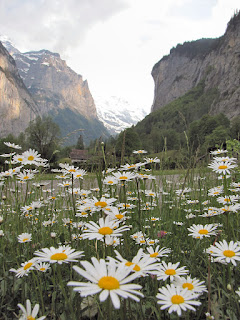I
often get asked what Latvia is most famous for, the implication that being a
country roughly the size of West Virginia (<25,000 square miles), it can’t
be well known for much. And the sad truth is that in recent years Latvia has
appeared negatively in the news accompanying human trafficking stories, has been advertised as a
stag party destination for “boozy British tourists”, and most
recently was mentioned yesterday the world over with the burning of the Castle of Rīga, Rīgas Pils. Although
a majority of people I meet today at least know that Latvia is a country
(in contrast to 15 years ago when more often than not I would be met with a
blank stare, or with a “where’s that?”), I often find myself explaining the
geographical location, climate, or answering the question of what the country I
consider my homeland (despite being born in Chicago) is best known for.
What
Latvia should be best known for is its rich cultural tradition. The Latvian
folk song, or daina, is a form of
oral literary art, and has long been considered a distinguishing feature of the
Latvian identity. Dating back over 1,000 years, there have been more than 1.2
million different dainas identified,
and something close to 30,000 melodies; no other peoples in the world can lay
claim to such an extensive oral history preserved in song. In addition, these
folk songs are still sung today, and you will rarely find a celebration or
gathering without singing, especially at the Jāņi celebrations taking place this weekend.
"To the Latvian the dainas are more than a
literary tradition. They are the very embodiment of his cultural heritage, left
by forefathers whom history had denied other, more tangible forms of
expression. These songs thus form the very core of the Latvian identity and
singing becomes one of the identifying qualities of a Latvian." (Vaira
Vīķe-Freiberga, former President of the Republic of Latvia, Journal of Baltic
Studies, 1975.)
What
Latvia should be famous for, is the incredible wealth of customs and
traditions, starting with singing and folk dancing, but including everything
from the national foods such as kliņģeris,
pīrāgi, Jāņu siers, skābie kāposti,
šprotes, etc. to the woven goods, the
woodcarvings, the amber jewelry and the literature. Starting with a beautiful
language that is one of the oldest of the Indo-European languages, to the
stunning physical beauty of the beaches, forests, rivers and old cities in the
country itself; Latvia’s riches lie in its people, natural beauty and its culture.
Tālavas taurētājs, Rūdolfs Blaumanis
Uz Tālavas
biezajiem siliem Nakts pelēkus palagus klāj; Pār klusiem koku galiem Jodi un
murgi jāj.
Dus
Miervaldis savā pilī, Guļ viņa ļaužu pulks, Guļ vaidelaiši un sargi, Un zīmju
gudrais tulks.
Tik
augstākās egles galā Taurētājs nomodā, Tas spiego pēc ienaidnieka Tuvu un
tālumā.
Te it kā
pa sapņiem tam liekas, Ka slepeni soļi
čab, Ka šķēpi pašķindētu, Ka zirgu pakavi klab.
Un
troksnis ap egli ceļas, Un bultas augšup skrien, Un asu cirvju zobi Egles
stumbrā lien.
“Šurp
tauri! Kāp zemē! Ciet klusu! Tu glābsi sev dzīvību; Mēs algosim tevi ar zeltu, Ar
godu, ar brīvību!”
“Mans
zelts ir mana tauta, Mans gods ir viņas gods! Kas postīdams viņu šausta, Uz
pekli lai rauj to jods!”
Un
taurētājs pūš ar spēku, Ka koku galotnes trīc, - Un lejā atskan lāsti, Un
bultas spindz un sīc.
Mirdz lāpu
sarkanā uguns, Sāk cirtiens uz cirtiena līt; Dreb, šūpojas staltā egle, Un
brakš, un gāžas, un krīt.
Un
taurētāja krūti Šķēpi un cirvji šķeļ, Bet taures skaņas pilī No miega Miervaldi
ceļ.
Un viņš un
viņa pulki Uz cīņu kājas aun, Un šķēpnešiem pretī drāžas, Dzen stiegnājā tos un
kaun…
Bet
uzvaras gaviļu svētkos Meitenes vaiņagus pin, Un varoni sirmā māte Sniegbaltos autos tin.
Uz sārta
vietu tam taisa No ozolu pazariem Un līgava puķēm to kaisa, Un dzintara
gabaliem.
Un kamēr
svaidītās liesmas Pie dieviem jaunekli nes, Dzied vīri tam slavas dziesmas, Raud
žēli meitenes.
What
Latvia should be making headlines with, is the XXV Vispārējie latviešu Dziesmu un XV Deju svētki (Nationwide Latvian Song and Dance Festival) that will
be taking place in a few weeks in Rīga (June 30 – July 7). Held every five
years, the first festival was in 1873. The festival is a key component of the
Latvian cultural identity, and the festivals since 1991 have seen about 30,000
members including the choirs, folk dancers, brass bands, traditional music
ensembles, harpists and vocal ensembles. The folk dancing lieluzvedums is expected to showcase 15,000 dancers, and the
culmination of the weeklong festival is the closing concert in open-air venue Mežaparks, featuring a combined choir of
over 15,000 singers. I’ve attended smaller Latvian song and dance festivals in
the US and Canada (even danced and sung in more than a few!), but I hope you’ll
join me on my journey to Latvia to experience the 25th Nationwide
Latvian Song and Dance Festival, my first in Rīga. For a nation with a population
of 2.058 million that languished for years under Soviet occupation, the song
and dance festival is a celebration of freedom, of culture, of life, and I can’t
wait to join in.
Manai dzimtenei, Raimonds
Pauls, Jānis Peters
Es redzu – nāk vīri pelēkos
vadmalas svārkos. Ir 1873.gads. Dimd Rīga un pirmie dziedāšanas svētki ir
sākušies ...
Man stāstīja Daugaviņ’, Kā
liktenis vīdamās, Dziesma savus svētkus svin, Ar bāliņu celdamās.
Tā dziedāja bāleliņš, Pret
likteni stāvēdams Viņa dziesmā gadu simts Kā mūžiņis krāsojās.
Vēl nāks Piektais gads, asins
lietus līs, Un visaugstākās priedes nolauzīs.
Iesim strēlniekos, dziesma
vētru sēs. Mūžam gaismas pils kalnā gavilēs.
Lai balstiņis vīdamās Pār
novadu aizvijās. Dziesma savus svētkus svin, Ar bāliņu celdamās.
Tā dziedāja bāleliņš,Ar Daugavu
nemirstīgs Viņa dziesmā gadu simts Kā mūžiņis krāsojās.
Cauri sirdīm mums lauztās
priedes augs Jaunā gaitā mūs jauni rīti sauks.
Tālāk mūžībā, dziedot iesim
mēs. Mūžam gaismas pils kalnā gavilēs.















































